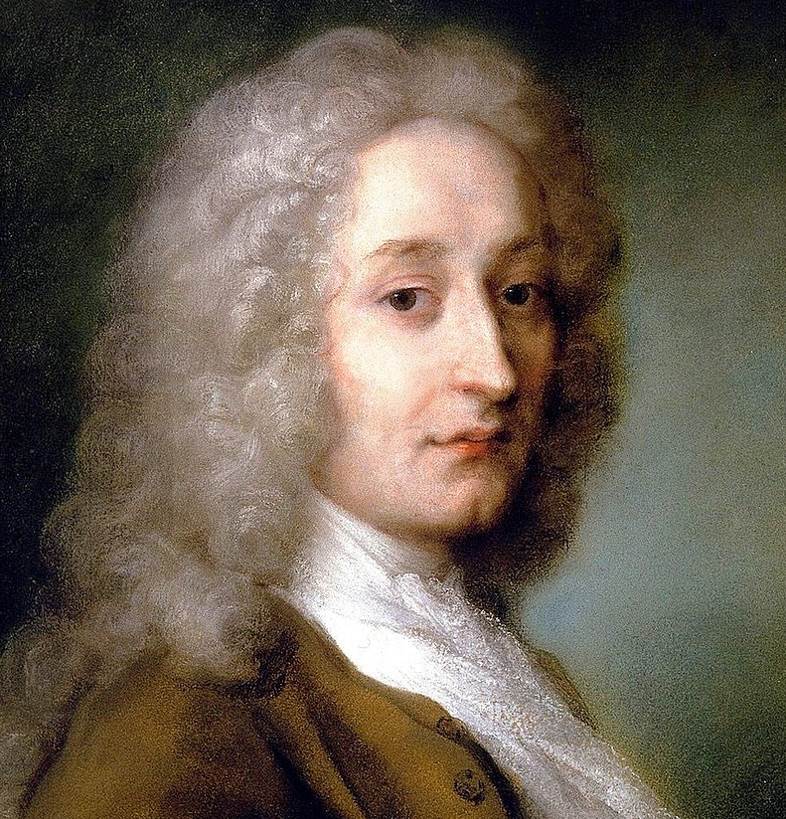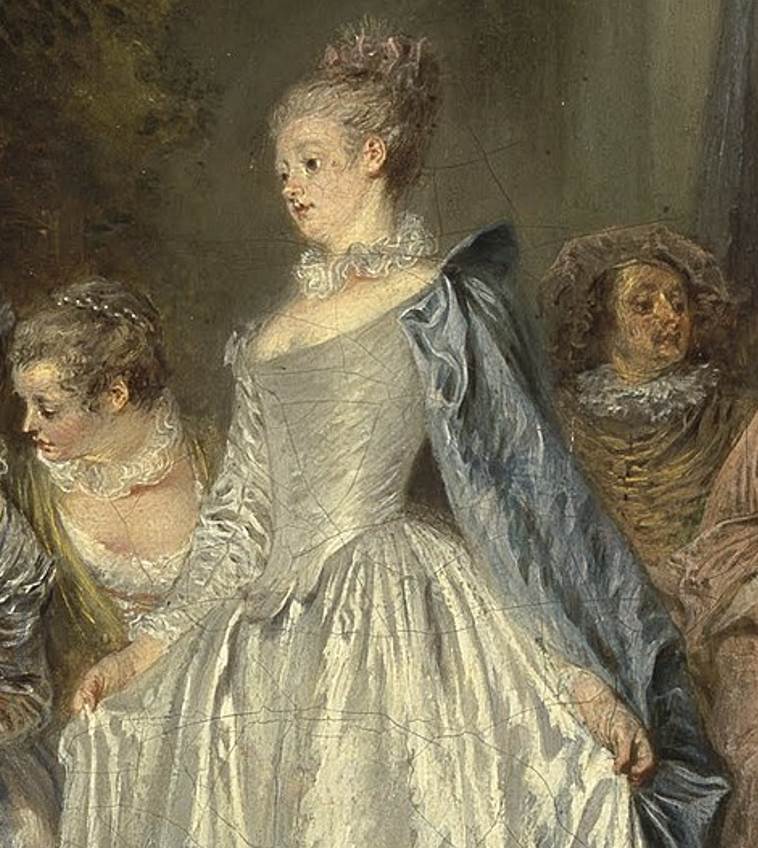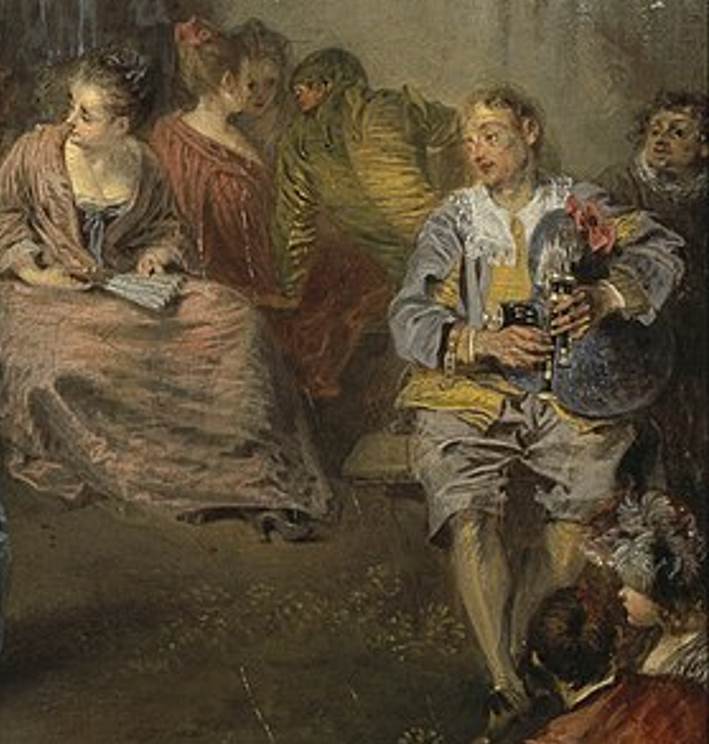One of the most influential Rococo artists of the early 18th century was fascinated by an early form of theater and it reflects in his paintings.
Jean-Antoine Watteau (1684-1721) invented a completely new genre of painting and this laid the foundation for the frivolous Rococo paintings in the following decades.
In this article, we take a closer look at some of the most interesting facts about Fêtes Vénitiennes, one of Watteau’s ultimate masterpieces.
1. It was completed in the final years of Watteau’s life
Jean-Antoine Watteau was born in Valenciennes, a city in Northern France that became part of France following the conclusion of the Franco-Dutch War in 1678.
He quickly showed a talent for painting and he moved to Paris to try his luck as an artist in 1702. He started his career by copying genre paintings in a local workshop.
He developed the typical technique that made him stand out from the rest and which became highly influential to French artists of future generations.
His style became mature when he managed to get access to Luxembourg Palace, a place that was full of paintings by Peter Paul Rubens (1577-1640).
He became a member of the Royal Academy in Paris and became one of the most sought-after artists in the city.
Unfortunately, his health was frail and he passed away at the young age of 36 in 1721. He completed Fêtes Vénitiennes 2 years earlier in 1719.

2. It depicts two people dancing in a lavish landscape
Although the Rococo style of painting only fully broke through in France in the 1730s, Watteau was a pivotal figure in the reviving of Baroque art and the transition to Rococo art.
Finely dressed people in lavish and idyllic parkland settings while engaging in popular social activities of the time was a type of genre painting that Watteau invented.
This type of painting was referred to as “fêtes galantes,” a reference to the party-like atmosphere of these particular paintings.
This painting depicts a man on the left who is dancing a “minuet,” a popular type of social dance in France at the time, with a finely dressed woman.

3. The title of the painting refers to the Venetian-style dance and dress
The main influence on Watteau’s oeuvre was something he was passionate about called Commedia dell’arte.
This type of Italian theater is an early version of modern-day professional theater and was gaining in popularity during the artist’s life.
It’s assumed that this type of theater had its roots in the Carnival of Venice and probably emerged in the late 16th century.
Watteau was one of the greatest fans of Commedia dell’arte and he often depicted actors who performed in it. This painting features the typical Venetian dresses that could be associated with it.

4. The two main figures in the painting have been identified
There are a lot of people in the background doing all sorts of things, including courting, fondling each other, or simply watching the two main characters who are dancing the minuet.
The man in this painting wears a black hat and a peculiar costume often used in comedy performances. He has been identified as Nicolas Vleughels (1668-1738), a Flemish artist who was born and raised in Paris.
He was a close friend of Watteau and even shared a house with him between 1716 and 1719. Vleughels traveled to Italy and spent quite some time in Venice, a notion that might have influenced this work.
The woman he is dancing with has been identified as Charlotte Desmares (1682-1753), the mistress of the Duc d’Orleans who was the regent of France between 1715 and 1723.

5. Watteau probably included a self-portrait in this painting
Although the main focus of the painting is on the two dancers in the foreground, a lot is going on in the background as well.
We can see a man courting a woman, two women talking to an actor of the commedia dell’arte theater, and a man playing a musical instrument that appears to be a bagpipe.
This musical instrument has had a sexual connotation in Europe ever since the Middle Ages and it adds an extra dimension of veiled eroticism to this work.
What’s remarkable is that the man playing the bagpipe is believed to be a self-portrait of the artist, Jean-Antoine Watteau.

6. The painting was reproduced in an engraving completed in 1732
The title of the painting “Fêtes Vénitiennes,” wasn’t the original title given to it by the French artist. It got its name from a derivative work that was completed in the year 1732.
This print was completed by the renowned French engraver Laurent Cars (1699-1771) and accurately represents Watteau’s masterpiece.
This print is part of the collection of prints and drawings at the British Museum in London.

7. How big is Fêtes Vénitiennes by Jean-Antoine Watteau?
Watteau completed both monumental works of art and much smaller ones. This painting definitely falls into the latter category.
Fêtes Vénitiennes by Jean-Antoine Watteau is a small oil on canvas painting that has dimensions of 56 × 46 centimeters (22 × 18 inches).
8. Where is the painting located today?
The painting didn’t stay in France as it became part of the collection of Lady Murray of Henderland in the 19th century.
She was the widow of John Murray, Lord Murray (1778-1859), a Scottish judge, and Senator of the College of Justice.
Lord Murray’s widow bequeathed the painting to the most popular museum in Edinburgh, the Scottish National Gallery where you can still admire Watteau’s painting today.



